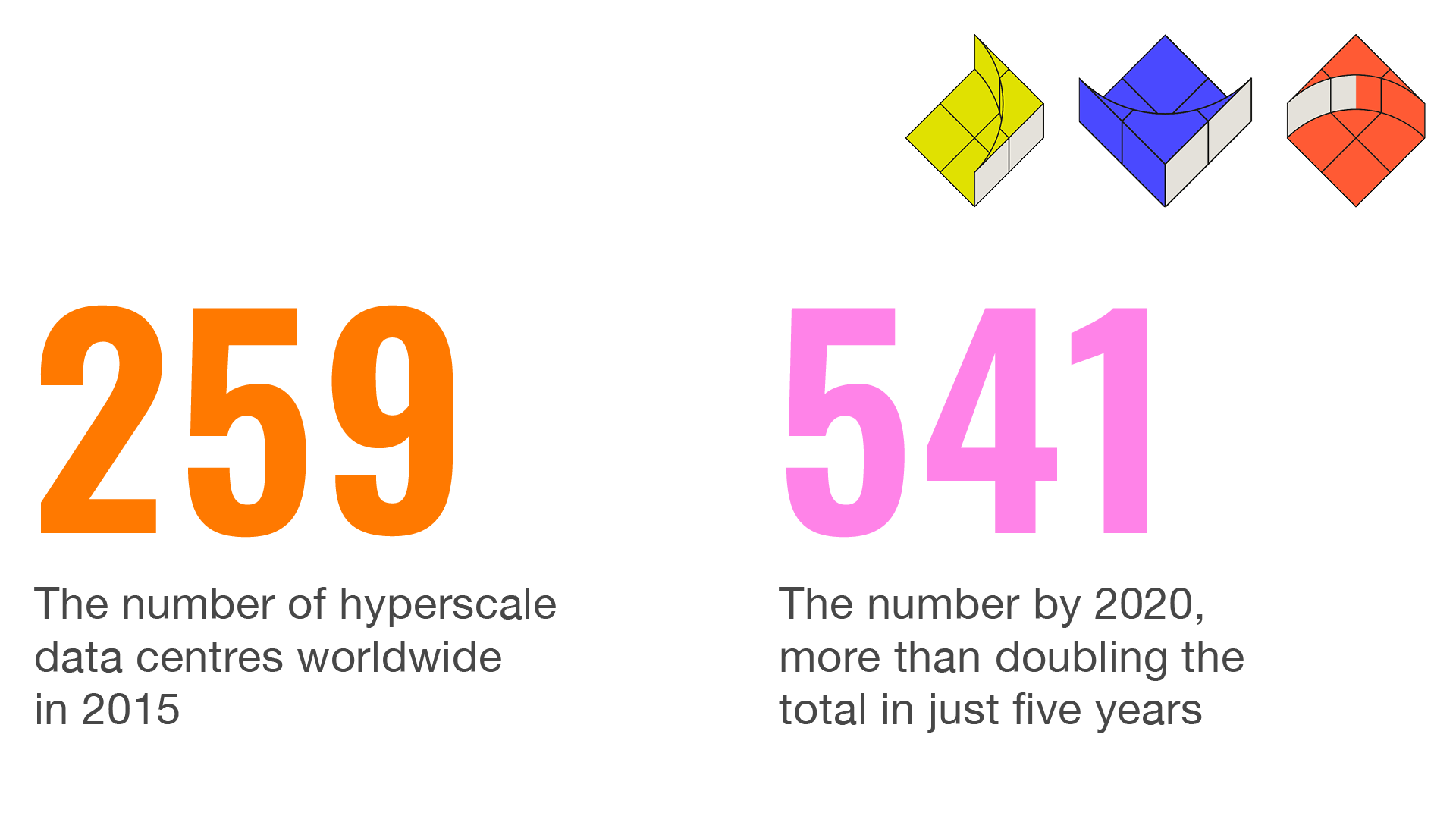
Out of the range of data centre typologies, from traditional and cloud data centres to the hyperscale and cloud-scale model, the latter has momentum right now. Name a large tech organisation: Amazon, Microsoft or Facebook and they’ll have their own hyperscale data centre.
These physical spaces enable billions of people to take these mega brands’ products and services for granted because of their speed and reliability, as well as allowing these corporations to exist in the cloud.
Synergy Research Group reported a doubling of hyperscale data centres in just five years, from 259 in 2015 to 541 by the second quarter of 2020. According to market intelligence released in the first quarter of 2021, it’s now common to see investment of up to $3bn in a single campus, with key factors in the growth of the hyperscale model including software platforms, content delivery and social media. Over 2.28bn social media users across the world means all those tweets, viral videos and images have to be stored somewhere.
Savills’ European Data Centre report states that hyperscale data centres are: “primarily designed to optimise performance and cost. If strong connectivity and security can be achieved, they can be located in rural areas.” For hyperscale and cloud-scale data centres, it is the Nordic regions of Iceland, Sweden, Norway and Denmark, followed by the Netherlands that top Savills’ country rankings, offering the best locations to build. The Nordic region’s reliable energy supply, including renewable energy, plus competitive electricity prices account for its strong reputation. The Netherlands has dense infrastructure, large cloud adoption and strong broadband connectivity in its favour.
Outside Europe, RICS’ Data Centres: An Unprecedented Opportunity Forum highlighted India’s position as a front runner in this asset class. This is thanks in part to its ability to handle data processing on a large scale, coupled with favourable regulatory requirements. Hyperscale is controlling the market and creating a significant proportion of demand there. “The boom in ordering products online from Amazon, eBay or Flipkart is creating rapid growth across the logistics and warehousing sectors, and a similar rate of growth in the data centre market,” says Sumeet Anand MRICS, global infrastructure & logistics leader at Genpact.

Micro data centres
One school of thought is that bigger is better where data centres are concerned, especially given that 6,659 packages were sent every minute by Amazon in 2020. But as we move to self-driving cars and devices that need to process data very quickly, we may need to shift away from big cloud-based operations to more ‘edge’ computing where data is stored on the edge of the network: in a router, micro data centre or device. Speaking to the Canadian Broadcasting Corporation (CBC), Blesson Varghese, a lecturer with Queen’s University Belfast argued: “One of the key challenges is addressing how we cope with these devices, as a lot of IoT applications require real time responses. They need to be computing as close to the user as possible.”
Peter Ruffley, founder of Zizo Software agrees: “The cloud connectivity that we were expecting over the last ten years just hasn’t happened and it can be patchy and expensive, which has led to opportunities to have, gather and store data closer to the source.” Ruffley has used edge technology with consumer goods and maritime clients and sees the potential for the building and construction sectors too. This is where decisions regarding safety and materials require exemplary connectivity and IoT data can be run through hard-wearing devices on site. He adds that analysis of relevant data as opposed to the whole data set is easier with edge computing than the cloud.
Instead of one or the other, Robert Thorogood, MEP lead director with engineering consultancy HDR Hurley Palmer Flatt concludes that they perform very different functions: “Cloud computing does the heavy lifting for storage and central business type processing, whereas edge provides immediate low latency processing near to use.”
The best locations to build hyperscale and cloud-scale data centres are the Nordic regions of Iceland, Sweden, Norway and Denmark.

